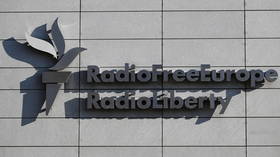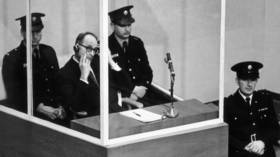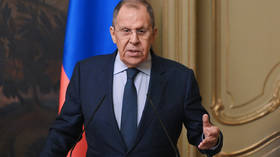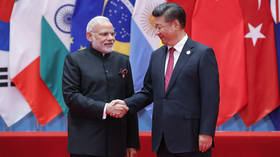Chernobyl nuclear disaster attracts tourists to ghost city
The worst man-made disaster the world has ever known is being remembered on Monday. 24 years ago, one of the reactors at the Chernobyl nuclear plant exploded, leading to tragedy.
In Moscow hundreds came to remember the victims at one of the city's cemeteries. Among them were those involved in cleaning-up the disaster zone and relatives of the victims.Similar ceremonies and memorial services have also been held in other Russian cities. Almost a quarter of a century on, the scene of the disaster, which exposed more than 600,000 people, is considered an extreme tourist destination.The streets of Pripyat – a ghost-town near the Chernobyl nuclear power plant – have become a second home for Anton Borodavka. For six years, the photographer from Kiev has taken thousands of pictures inside the 30-kilometer exclusion zone.Chernobyl monument; in the background: the cooling tower of reactor #4 (Image from timmsuess.com)As the RT team went up Pripyat’s tallest building for a photo shoot, Anton explained his motivation.“I feel a duty to help those who want to know more about the zone. To learn that it’s not just a dead city. With my pictures I bring the true story which few know – that there are people still living here. That there are lots of animal species considered extinct,” Anton says.The reactor at Chernobyl’s nuclear power plant exploded on April 26, 1986. What is believed to be human error caused the largest radioactive emission in history.A lid over the destroyed reactor – called the sarcophagus – was built to prevent further radioactive damage.24 years on, the lifeless area around the plant is known still to have mild levels of radiation.However, experts believe that a huge danger still exists there.“Most of Ukraine stands firmly on a solid tectonic bloc. But there is a small crack right where the Chernobyl Nuclear Power plant is situated. So in case of an earthquake – even of a small magnitude – the sarcophagus might collapse. And I cannot exclude the possibility of a powerful nuclear explosion,” says Vladimir Yavorivskiy, a member of the Ukrainian parliamentUS president Barack Obama recently donated quarter of a billion dollars to Ukraine’s government to provide tougher nuclear security in Chernobyl.However, despite global understanding of the zone’s threat, for some this danger seems more like an attraction.The town of Pripyat was to have its own amusement park which was supposed to be launched on May 1, 1986. But the tragedy prevented that from happening. Instead, two decades on, the area around Chernobyl has turned into something of a theme park itself. Last year, Forbes magazine rated Chernobyl as the best destination for an extreme holiday.Lenin Square, view from Hotel Polissya in the ghost city of Pripyat near Chernobyl (Image from timmsuess.com)Tens of thousands people from across the world come there every year to witness the atmosphere of an apocalypse. Tours to Chernobyl are organized officially for less than a hundred US dollars per person.It is something Anton finds unacceptable.“Most of the people who come here regard Chernobyl as a museum. They sometimes come here looking for mutants. They have no place here,” Anton Borodavka says. “The zone is dangerous and it's not an amusement park. It is a tragic catastrophe and should not be used as a playground.”Having taken another set of pictures in the Chernobyl exclusion zone, Anton takes the crew back to Kiev to publish one more photo-album inspired by the zone’s images. The new one is dedicated to people living in the contaminated area. He does this not for commercial reasons, but to let everyone know what the aftermath of the world’s worst nuclear accident looks like.













